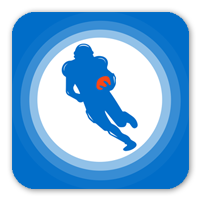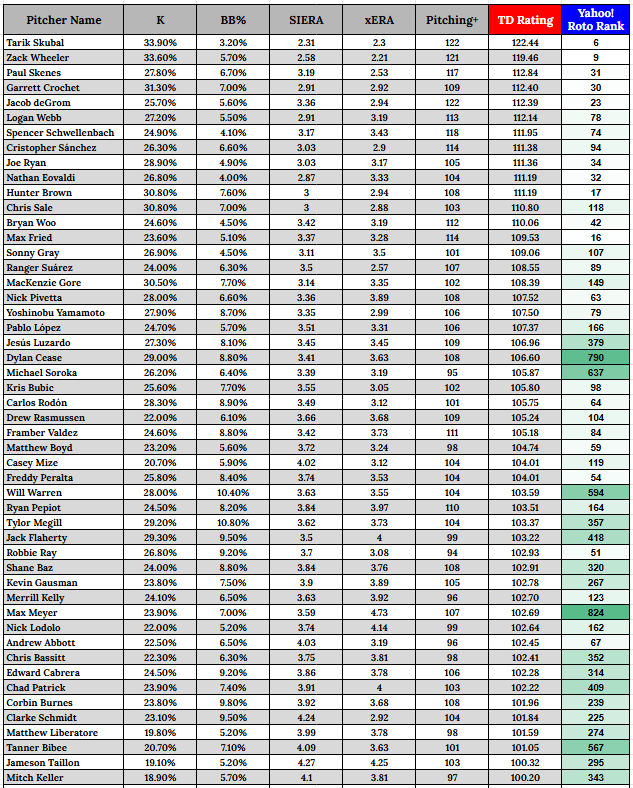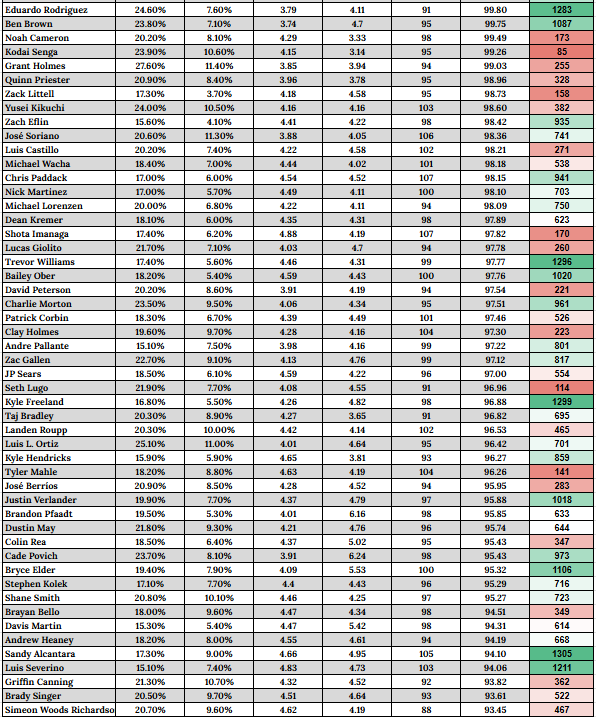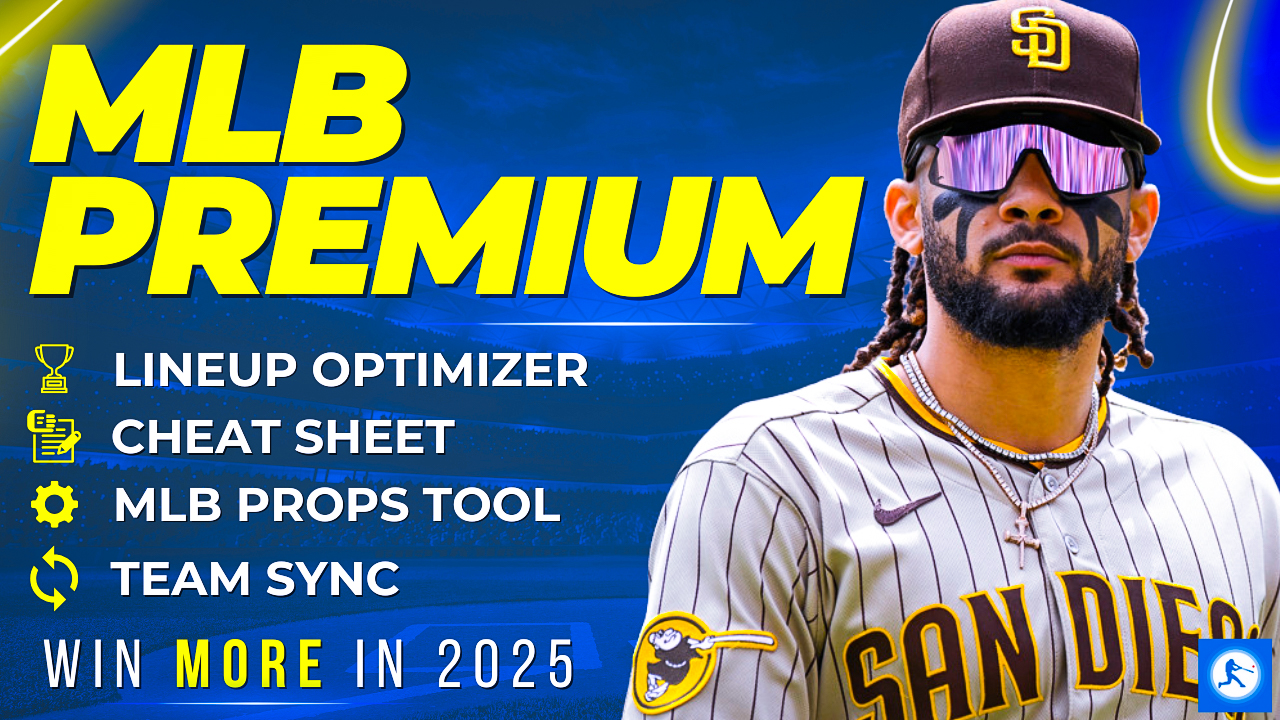Thunder Dan Palyo unveils his latest ranking system for starting pitchers and then examines which pitchers are potential buy lows or sell highs when comparing their ranking with their current fantasy ranking.
With the All-Star break looming in a few days, and the fact that I am running out of pitchers to break down (I suppose I should have limited myself to three per article), I will conduct another week of statistical analysis instead of individual pitcher breakdowns.
Throughout this season, I have been developing my own rating system for starting pitchers, and I figured this week would be as good as any to finally unveil it and see if there's anything we can learn about the performances of certain starters through the first half of the season.
So here goes nothing! I am going to unveil the first edition of Thunder Dan's starting pitcher ratings for the 2025 season and then try to unpack what it might mean for any particular pitchers and for the second half of the fantasy baseball season.
Be sure to check all of our fantasy baseball lineup tools and resources:- Fantasy baseball trade analyzer
- BvP matchups data (Batter vs. Pitcher)
- PvB matchups data (Pitcher vs. Batter)
- Who should I start? Fantasy baseball comparisons
- Daily MLB starting lineups
- Fantasy baseball closer depth charts
- Fantasy Baseball live scoreboard
- Fantasy baseball injury reports
Thunder Dan's Starting Pitcher Rating System
If others can have their own pitching metrics, then why can't I? My rating system is an aggregate of my top five statistics when evaluating the effectiveness of starting pitchers. The five statistical inputs are K%, BB%, SIERA, xERA, and Pitching+. Here's a quick breakdown of each stat.
Strikeouts are not only valuable in fantasy baseball for scoring purposes, but strikeout rates are also highly correlated with other pitching stats.
Walk rates are often overlooked, but pitchers who show above-average control and limit free passes also usually have low WHIPs. I'm specifically separating strikeouts from walks here because K-BB% is a nice overall metric to us, but it doesn't tell us if a pitcher has improved their strikeouts or walks, or both.
SIERA is my favorite ERA indicator to use when evaluating pitchers. Unlike FIP and xFIP, SIERA factors in batted ball data other than home runs. It's the most nuanced of the popular ERA indicators.
xERA is short for "expected earned run average." It's another ERA indicator; however, it incorporates Statcast metrics such as exit velocity and launch angle to gauge a pitcher's effectiveness, attempting to remove luck (i.e., hard hit balls right at defenders) and defense from the equation.
Pitching+ is one of three metrics (along with Stuff+ and Location+) that Eno Sarris and Max Bay created to measure pitcher effectiveness by stripping away all on-field results after a pitch is thrown. Pitching+ factors in the physical characteristics of the pitch (location, velocity, spin rate), the count that the pitch is thrown in, and even batter handedness.
These stats are not the same as the four categories that starting pitchers receive points for in standard 5x5 leagues (W, Ks, ERA, WHIP), but we see strong correlations between K% and strikeouts (that one is obvious), BB% and WHIP, and both SIERA and xERA with ERA.
Paul Skenes dominated again today.
5 IP, 5 H, 0 ER, 0 BB, 10 K
And once again, he gets ZERO DAMN RUN SUPPORT.pic.twitter.com/E77tKzJKZJ
— Eric Cross (@EricCrossMLB) July 6, 2025
Pitching+ to me is a great stat because it is a comprehensive stat that usually correlates well with all the others. It can also capture the potential of a pitcher who has good stuff and location, but may not be getting the best results in surface-level statistics because of bad luck or other factors outside their control (like run support - see Skenes, Paul).
Each of the five categories is weighted equally, and every starting pitcher who has thrown 60 or more innings this season received a rating. It's time to see who came out where and if it means anything.
Thunder Dan's Top-50
A few more quick notes about my methodology and results: the standard deviation for the 123-pitcher sample was 7.2 points, and the ratings are scaled to where 100 is the average. That means that 68% of our sample is in the range of 93 to 107. Only 16% of pitchers received a rating of 107 or better. Notably, the average rating was 100, with 50 pitchers achieving this score or higher, while 73 pitchers rated lower.
Let's make observations about the top 50. I included their current Yahoo ranking to see how their fantasy ratings valued these pitchers in comparison. There appears to be some strong correlation among the top pitchers, but it quickly dissolves, and the entire sample showed a relatively strong negative correlation (likely thrown off by some of the huge numbers in the Yahoo ranks).
Tarik Skubal and Zack Wheeler are lapping the field, with Skubal deserving his own tier entirely. At 122.4, he's three standard deviations above the average pitcher. The gap between Skubal and Paul Skenes is 10 points, which is the same difference as Skenes and someone like Andrew Abbott or Robbie Ray. For those who think Skenes would be a shoo-in for the Cy Young if he had more run support and a few more wins, I will point out that Wheeler has been better across all five metrics in addition to having more wins.
Over his 10 home starts this season, Tarik Skubal of the @tigers is 8-0 with 90 strikeouts and seven walks.
It's the only time in the modern era that an MLB pitcher has had any 10-start span at home with that many wins and Ks but so few losses and walks. pic.twitter.com/dyXgb0FtXB
— OptaSTATS (@OptaSTATS) July 11, 2025
There is a clear second tier after Skubal and Wheeler that consists of Skenes, Garrett Crochet, Jacob deGrom, Logan Webb, and Spencer Schwellenbach (who is now hurt, unfortunately). If he had enough innings to qualify, Logan Gilbert would be right there, too, but he missed a ton of time earlier this season. Webb's Yahoo! rank stands out here, and I struggle to understand what he's being punished for, as his surface stats are all really good across the board, too.
Our 111-Club consists of Cristopher Sanchez, Joe Ryan, Nathan Eovaldi, and Hunter Brown. Sanchez's rating of 94 is another weird outlier like Webb that I wouldn't get too caught up in; he's been outstanding across the board all year. Brown stands out oppositely as his Yahoo rank may be a bit inflated when compared to his skills. He's still been awesome this year, but he may be a victim of his own success as he's got nowhere to go but down if he stumbles at all (as he did against Cleveland last time out).
Guys like Chris Sale, Sonny Gray, and MacKenzie Gore pop in the color-coding as pitchers who are much better than Yahoo is trying to tell us.
Will Warren, Painted 79mph Curveball. 🖌️🎨 pic.twitter.com/ZAKVw6bX4J
— Rob Friedman (@PitchingNinja) July 9, 2025
Then we get to some interesting names like Michael Soroka, Dylan Cease, and Will Warren. All three are good examples of buy-lows to me as their Yahoo rating is being held WAY down by their ERA and/or WHIP, but their xERA and SIERA show that they are candidates for positive regression, and all three have been above-average strikeout pitchers.
I could go on with commentary on a bunch of these pitchers, but I will wrap this section with a few pitchers that Yahoo overvalues when compared with their TD ranks. Freddy Peralta (54), Ray (51), and Abbott (67) all qualify here. I have nothing against any of these guys, but they have their warts and should be viewed as "very good" but not "elite" options.
TD's Ranks 51-100
This group is all over the place. While these pitchers are all technically "below-average" in the rating system, the list cuts off here at 93, so even those near the bottom are still only one standard deviation from the middle.
What I find fascinating is that the model views Ben Brown and Eduardo Rodriguez (Yahoo ratings over 1,000) as roughly equal to guys like Kodai Senga, Yusei Kikuchi, and Grant Holmes, who are all highly rostered across leagues. Senga returns to the mound tonight, and his underlying numbers scream regression, unless he's returned healthier than he was to start the year.
Some other notables would be Shota Imanaga, who has been a major disappointment this year compared to what he did in his rookie campaign last season. Right now, you could get the same type of production from Lucas Giolito, who is back from the dead.
Bailey Ober has sucked and is now hurt, but is ranked right next to David Peterson, who has been a major success story. It's just a reminder that the margin for error for guys like Peterson or Seth Lugo (114 ranking but only 96.8 rating) is tiny, and their outcomes can vary greatly depending on their team context and luck since they aren't dominant pitchers.
Some names that jump off the page here that used to be reliable fantasy options would be Zac Gallen, Luis Castillo, Zach Eflin, Charlie Morton, Justin Verlander, and Sandy Alcantara.
The Worst of the Worst
Tomoyuki Sugano, Miles Mikolas, and Cal Quantrill are still over 93, but the rest of this group falls into the bottom 16% of starting pitcher ratings.
Other than Gavin Williams and Jeffrey Springs, not many of these pitchers are rostered in standard leagues. But yeah, these guys suck at pitching and aren't doing much of anything well. It's funny because if you asked me to give you my top-10 pitchers to stack against in DFS, I think they are all on this list, and I would start with the last six and likely add Bowden Francis, German Marquez, Jake Irvin, and either Sugano or Mikolas.
Conclusion
I think my system does a pretty good job of identifying the cream of the crop, as the top-rated fantasy pitchers all fared well in my system. However, the system does not account for pitcher wins, which carry a lot of fantasy value. It also rewards high-strikeout and low-walk pitchers, probably a bit more than it should, but I would contend that I still want those pitchers more often than pitchers who have control issues or allow a lot of contact.
I debated whether or not to use two ERA indicators, as it could be redundant, but I wanted to incorporate some Statcast batted ball data into the mix in some way.
This is my first crack at doing this, and I'm going to continue to track these rankings for the rest of the season. I may even end up writing another article about them by the end of the year, we'll see. I hope you learned something, or at least had some fun with me digging through these rankings.
If you have other questions, don't hesitate to hit me up @ThunderDanDFS on X!
More Fantasy Baseball Advice
Download Our Free News & Alerts Mobile App
Like what you see? Download our updated fantasy baseball app for iPhone and Android with 24x7 player news, injury alerts, sleepers, prospects & more. All free!






 RADIO
RADIO



























